SOMIRO School
Miniaturized and soft robots
9-12 October 2023
Marina di Castagneto Carducci (Italy)
Registrations are closed!
Speakers
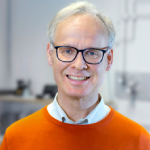
Klas Hjort
Prof. Klas Hjort is Head of the Microsystem Technology (MST) programmeat the Dept. Engineering Sciences, Uppsala University, with a long-standing track record on microfluidics and advanced microfabrication. With his utilization oriented perspective, he works closely with experts and end-users in academy and industry, providing microsystems to his partners.
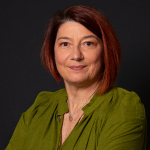
Isella Vicini
Wide experience in the EC Research and Innovation projects, like Horizon2020 and LIFE Programme: since the First Framework Program (1985), Isella works in the European Project Management field, leading the European Funding Division of Warrant Hub. CEO and the founder of beWarrant, a Belgian consultancy company that provides support on European Funding opportunities.

Gustaf Mårtensson
Digital production strategies for novel electronic devices
Abstract
The production and consumption of electrical and electronic equipment (EEE) in the European Union (EU) are on the rise (Eurostat 2020). Due to low levels of reuse, collection, recycling, and other forms of recovery of waste EEE, the consumption of rare and expensive natural resources is also increasing. This imposes higher economic and environmental pressure on manufacturers of modern electronic devices. As new fields of applications for novel, soft, non-planar electronic devices continue to emerge, such as wearable smart textiles, medical/health-monitoring devices and miniature autonomous robots, the market for these electronic devices is expected to grow rapidly. Amid the COVID-19 crisis, research indicates that the global stretchable electronics market will reach $2.6 billion by 2027 (Researchandmarkets 2020). The development of methods to assess the ecological impact of not only the electronic device, but also the production process, is an area of research that is growing. Life Cycle Assessment (LCA) is a useful method to identify and quantify the environmental impacts of a product, process, or activity. Comparative LCA can be carried to compare the environmental impacts of two or more products that have similar functionality. The production process for stretchable electronics that is being developed in the SOMIRO project is based on a digital production strategy, where the production steps are digitally controlled and optimised.
Short Bio
Gustaf has a M.Sc. in Engineering Physics from the Royal Institute of Technology (KTH) in Stockholm, Sweden. He continued his studies in the realm of fluid mechanics and received his Ph.D. in 2006 from KTH. Gustaf divides his time between rolls as an Expert of Complex Fluids at Mycronic AB and an affiliated researcher at the School of Chemistry, Biotechnology and Health at the Royal Institute of Technology in Sweden.

Florian Hartmann
Soft Electrostatic Actuators for Small-Scale Machines/ Electrostatics in Action
Abstract
Muscle-mimetic actuators are about to transform robotic systems by enabling ever more life-like creations. This transformation flourishes by the development of functional materials that are soft or soft-hard hybrids, paving the way for energy-efficient autonomous machines. Yet, achieving the power and energy density found in natural muscles remains a major scientific and engineering challenge in artificial systems. Actuators based on electrostatic driving mechanisms are a powerful approach to this problem due to their high energy density, fast contraction, and ease of fabrication. This talk highlights promising actuator designs for small-scale machines in the millimeter to centimeter scale. With a focus on strategies to downscale actuators, we provide materials solutions, fabrication strategies, and discuss various applications from tunable optical systems to swimming robots. In addition to this presentation, we will do a practical activity to show electrostatics in action.
Short Bio
Florian Hartmann is a physicist with a Doctor in Technical Sciences from the Johannes Kepler University Linz in Austria. He specializes in soft robotics and electronics, flexible electronics, and sustainable materials, and has published extensively on these topics. During his doctoral studies, Florian Hartmann worked as a visiting researcher at Linköping University in Sweden on microfabrication processes of stretchable electronics. He is currently a postdoctoral researcher at the École Polytechnique Fédérale de Lausanne (EPFL), Switzerland, where he is working with Prof. Herbert Shea on small-scale swimming robots, actuation technologies, and functional materials.
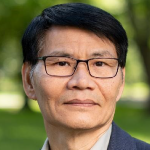
Hugo Nguyen
Chemical sensors and Sensing – Tiny sensors for the big world
Abstract
Chemical sensors play a crucial role in a wide range of applications, including environmental monitoring, industrial process control, and medical diagnostics. These sensors enable the detection and quantification of various chemical species in complex samples, offering valuable data for assessment of critical situation to take actions if needed. This lecture highlights the recent advancements in chemical sensor technology, focusing on the development of novel materials, miniaturization, and improved sensing mechanisms. It also discusses the challenges associated with selectivity, sensitivity, and response time, which researchers are actively addressing through innovative sensor designs and signal processing techniques. The integration of nanomaterials, such as graphene and metal oxides and doping them with noble elements, has led to enhanced sensor performance, enabling detection at lower concentrations and faster response times. Additionally, advancements in microfabrication techniques have facilitated the miniaturization of chemical sensors, enabling their integration into portable and wearable devices for real-time monitoring.
Short Bio
Professor Hugo Nguyen is a senior researcher and lecturer at the Department of Materials and Engineering Sciences, Uppsala University, Sweden. Over the past 15 years, he has been working on chemical sensors for environmental monitoring and healthcare, utilizing metal oxide semiconductors as the sensing materials. His research has primarily focused on miniaturizing the sensors through the implementation of MEMS technology, enhancing sensitivity and selectivity, and minimizing power consumption to ensure their suitability for portable devices. Within the SOMIRO project, he contributes by developing a sensor system for monitoring the health of paddy field water.
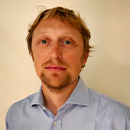
Alessandro Tognetti
Smart sensors for AI-based management of complex chronic conditions: the TOLIFE project
Abstract
The TOLIFE project will clinically validate an artificial intelligence (AI) solution to enable optimised and personalised treatment in COPD patients. TOLIFE will process daily life patient data captured by non-invasive smart devices (smartwatch, smartphone, smart mattress cover, smart-shoes, environmental unit) to predict exacerbations, assess the patients’ health outcomes and characterize the patient health status. This talk will focus on description of the non-invasive smart devices selected for use in the TOLIFE clinical studies: smartwatch, smartphone, smartshoes, smart matters cover and environmental unit. The focus is on the data collection architecture, the reasoning behind choosing each specific sensor, the raw data associated with them, and the high-level health-related parameters they capture.
Short Bio
Alessandro Tognetti completed his undergraduate studies in Electronic Engineering and earned his Ph.D. in Bioengineering from the University of Pisa, Italy, in 2001 and 2005, respectively. Presently, he serves as an Associate Professor of bioengineering at the Department of Information Engineering at University of Pisa, where he teaches courses on Biosensors, Bioelectric Phenomena, Bionics Senses, and Modelling Of Multi-physics Phenomena. His research primarily focuses on the development of wearable and non-invasive sensors and systems for biomedical applications, innovative sensor principles, and the modeling of bioelectrical signals. He has actively participated in numerous national and international research projects (over 20 projects) and collaborated extensively with universities, research institutes, and companies across the globe. Currently, he is coordinating the Horizon Europe project TOLIFE as the coordinator.
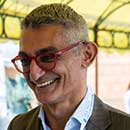
Giovanni Vozzi
3D and 4D printing technologies for processing soft materials
Abstract
3D and 4D printing technologies have revolutionized the processing of soft materials, offering unprecedented design freedom and functional capabilities. Soft materials, including hydrogels, elastomers, and polymers, have obtained significant attention for their diverse applications in biomedical engineering, soft robotics, and wearable devices. Through 3D printing, complex structures can be fabricated with high precision and accuracy. The integration of 4D printing, instead, introduces dynamic behavior, enabling shape-morphing and self-adapting soft structures exploiting materials that can change their shape, functionality, or properties over time in response to external stimuli, such as temperature, humidity, or light. This abstract provides a concise overview of the advancements and potential of 3D and 4D printing technologies in processing soft materials, emphasizing their transformative impact on various industries and the related challenges.
Short Bio
Giovanni Vozzi is a Full Professor in bioengineering at the University of Pisa. He is one of the leading Italian representatives of theoretical and applied research in the field of biofabrication, with decades of experience in multiscale and multimaterial scaffold fabrication by 3D and 4D printing, in the development of micro- and nanofabrication techniques for the biomedical field, in the physicochemical, mechanical and cellular characterization of new biomaterials and polymeric micro- and nanostructures, and in the development of bioreactors capable of recreating cellular compounds under physiological and pathological conditions. His expertise in the field is demonstrated by the several competitive grant-winning research projects in which he is involved as coordinator. Since more than 10 years, he is the director of the Biofabrication Lab in Pisa, where he works on the most advanced fabrication technologies for tissue engineering and regenerative medicine applications.
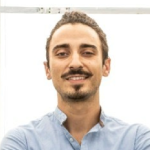
Valerio Ciotola
The Importance of monitoring the water in a high quality agrifood production
Abstract
The Circle is the largest aquaponic farm in Italy. The farm consists of a 5000 m2 aquaponic implant regularly running since 2017.
With aquaponics, The Circle gains important advantages such as:
- 180 liters of water saved per kg of salad
- 33,000 kg of CO not emitted into the atmosphere every year
- Production per hectare: 4x
- Pollutant emissions: 0%
- Reduced use of herbicides, synthetic fertilizers and insecticides.
This system also guarantees higher yields and more rapid growth in the plants under cultivation.
Within SOMIRO, The Circle acts as the main end-user from the aquaponics food sector and we will run the sensors in a real site area.
With the data generated from the collection in our production implant we are helping the improvement of the sensor and at the end of the project what we expect is the effective demonstration of the applicability and effectiveness of the SOMIRO sensor in improving the production and control processes of an agritech company.
Short Bio
CEO and co-founder of The Circle, the biggest acquaponic company in Europe. Master’s degree in industrial biotechnology at the University of Rome Tor Vergata, with studies on microalgae and sustainable production processes. Former tutor for botanical students, passionate about technology and respectful of the environment. Founder of other start-ups based on cleantech applications that received support for Accelator startups from Bocconi University in Milan.

Giovanni Chiò
Learn more about rice
Abstract
To improve production and competitiveness in the field it is necessary to increase knowledge of the crop in place in order to adopt the best strategies and choices. Especially in the production of organic rice, having an instrument that provides information on the elements present in the water is certainly useful for cross-referencing the satellite maps of vegetative vigor. The objective will be to use the millirobots in a rice paddy with different experimental varieties of rice, submerged with about 15/20 cm of water. We are going to define small areas in which to contain the movement of the millirobot and manage the communication of information. The prospect is to use it in the future in more fields and during the different stages of rice growth. It is a technology that does not exist today as the information is received through vegetative vigor sensors, satellite maps, yield production maps; it will be a great opportunity for rice producing companies.
Short Bio
Giovanni Chiò is the legal representative of Battioli Paola Società Agricola together with his brothers. In the company activity he uses tools for precision agriculture. The organic production of rice, soybeans, wheat and barley; produces seed rice and collaborates in the development of rice varieties. He is also president of Confagricoltura Novara and VCO (agricultural trade association). He carries out a consultancy activity in the field of precision agriculture for Topcon Italy.

Javier Talavante
The journey toward harvesting-based wireless networks
Abstract
This talk will present the journey to harvesting-based networked systems, where we stand, and how future networks should integrate different technologies. The talk will in particular focus on applications such as vertical farms, and greenhouses.
Short Bio
Javier Talavante is a PhD student in the Pervasive Wireless Systems Group at IMDEA Networks and in the Telematics program at the University Carlos III de Madrid. He received his MSc in Telecommunications Engineering and a BSc in Audio and Video Engineering from the same institution. His research interests include battery-free IoT devices, LiFi systems and low-power communications, in which he works jointly with the startup project LiFi4Food, developing autonomous IoT devices for indoor agriculture.
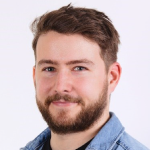
Christoph Putz
Energy management: Fundamentals of solar cell technology and power management
Abstract
Solar cells have become the primary technology for powering untethered autonomous devices, ranging from everyday items like calculators to cutting-edge robots exploring Mars. Their reliability, scalability, and ability to harness renewable energy from the sun make them indispensable for enabling sustained operation and powering various applications across different environments. The solar cell technology developed within SOMIRO addresses the limitations of conventional rigid cells by offering high form factor, mechanical compliance, and high specific power. Their flexibility enables seamless integration into the robot, while their lightweight nature ensures minimal impact on its overall weight and maneuverability. The connection of a solar cells to an intelligent power management system plays a vital role in efficiently controlling and distributing the generated electrical power, optimizing its utilization and storage for extended periods of operation in autonomous robots. The presentation will encompass an overview of solar cell technology, from its fundamental principles to its practical applications in robotics. Attendees will gain insights into the advancements made within the field and the significant role that solar cells and intelligent power management play in enhancing the performance and capabilities of autonomous robots.
Abstract Practical Activity
In this hands-on practical activity, participants will be introduced to fabricating a simple dye-sensitized solar cell (DSSC). They will learn the step-by-step procedure for constructing these solar cells and gain an understanding of the underlying principles involved. Additionally, attendees will be guided on accurately characterizing the fabricated solar cells following internationally recognized standards. This activity offers a valuable opportunity for participants to engage with the practical aspects of solar cell fabrication and characterization, fostering a deeper understanding of this renewable energy technology.
Short Bio
Christoph Putz is a PhD student researching at the Department of Soft Matter Physics at Johannes Kepler University. For the past four years, he has been dedicated to advancing the field of ultrathin flexible organic and perovskite solar cells. His research focuses on exploring pathways to enhance solar cells’ stability, improve their power per weight ratio, and other favorable optoelectronic properties, particularly for small robots and wearable IoT devices. He contributes to the SOMIRO project by developing the power management unit, which consists of an efficient solar module and electrical harvesting circuit.

Lukas Lehner
Energy management: Fundamentals of solar cell technology and power management
Abstract
Solar cells have become the primary technology for powering untethered autonomous devices, ranging from everyday items like calculators to cutting-edge robots exploring Mars. Their reliability, scalability, and ability to harness renewable energy from the sun make them indispensable for enabling sustained operation and powering various applications across different environments. The solar cell technology developed within SOMIRO addresses the limitations of conventional rigid cells by offering high form factor, mechanical compliance, and high specific power. Their flexibility enables seamless integration into the robot, while their lightweight nature ensures minimal impact on its overall weight and maneuverability. The connection of a solar cells to an intelligent power management system plays a vital role in efficiently controlling and distributing the generated electrical power, optimizing its utilization and storage for extended periods of operation in autonomous robots. The presentation will encompass an overview of solar cell technology, from its fundamental principles to its practical applications in robotics. Attendees will gain insights into the advancements made within the field and the significant role that solar cells and intelligent power management play in enhancing the performance and capabilities of autonomous robots.
Abstract Practical Activity
In this hands-on practical activity, participants will be introduced to fabricating a simple dye-sensitized solar cell (DSSC). They will learn the step-by-step procedure for constructing these solar cells and gain an understanding of the underlying principles involved. Additionally, attendees will be guided on accurately characterizing the fabricated solar cells following internationally recognized standards. This activity offers a valuable opportunity for participants to engage with the practical aspects of solar cell fabrication and characterization, fostering a deeper understanding of this renewable energy technology.
Short Bio
Lukas Lehner is a PhD student currently researching perovskite solar cells at the Soft Matter Physics Division at the Johannes Kepler University in Austria. His academic work ranges from developing biodegradable optical components of soft, exteroceptive actuators for soft robots, to investigating the nucleation and crystallization dynamics of perovskites and its impact on photovoltaic and light emitting applications. Within the SOMIRO project, he contributes to the development and characterization of the solar energy harvesting module.
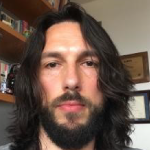
Manolo Garabini
Robotic Monitoring of Habitats: the Natural Intelligence Approach
Abstract
Global warming and pollution are threatening the survival of over one million species in nature. Continuous monitoring of habitats is paramount to protecting and preserveing this biodiversity. Robotics can solve this issue and enhance environmental conservation through the active assistance of humans. However, the technical barriers that still need to be tackled are numerous. We propose a framework to perform terrestrial habitat monitoring exploiting the mobility of legged robotic systems. The robot will be provided with the Natural Intelligence introduced as the combination of the environment in which it moves, the intelligence embedded in the design of its body, and the algorithms composing its mind. This approach could solve the challenges of deploying robots in real natural environments, such as irregular and rough terrains, long-lasting operations, and unexpected collisions, with the final objective of assisting humans in assessing the habitat conservation status. Finally, we present examples of robotic monitoring of habitats in three different environments: forests, grasslands, and dunes.
Short Bio
Manolo Garabini M.A. in Mechanical Engineering and a Ph.D. in Robotics is currently employed as an Assistant Professorat the University of Pisa. His main research interests are in the design, planning, and control of soft and adaptive robots, from actuators to end-effectors (hands, grippers, feet), to complex multidof systems. He contributed to the realization of modular Variable Stiffness Actuators. He contributed to the design of the joints and the lower body of the humanoid robot WALK-MAN and participated in the DARPA Robotics Challenge and at a field test in Amatrice, Italy after a disastrous earthquake event. Moreover, he co- esigned the hardware and software of a dual-arm robot – WRAPP-up – for flexible picking and palletizing of goods, and of a robot for film unwrapping. Recently he contributed to the development of several algorithms, based on optimal control and learning, for motion planning and control in minimum time and under uncertainty. He has played a leading role as Principal Investigator in THING, as coordinator of NI and of Dysturbance (sub-project of EUROBENCH) H2020 project. He is the co-founder of two companies, qbrobotics s.r.l., and XStar Motion s.r.l.
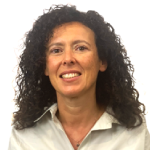
Arianna Menciassi
The MAPWORMS project: Biomimicry, smart materials and shape-morphing robots
Abstract
The talk describes the unique approach and the first results obtained in the framework of the MAPWORMS project, which aims at starting a novel paradigm of robotics and overcoming the limitations of current state-of-the-art solutions by embedding responsivity in the constitutive materials of the machines. The objective is developing a new concept of bioinspired robots operating in response to environmental stimuli thanks to their shape-morphing configuration. The result is a completely autonomous robot capable of performing many different tasks, rather than a robot controlled by a central unit and able to execute specific tasks only in a pre-defined and structured environment. The shape morphing behaviour is inspired by the marine Annelida, which are able to adapt to all the marine habitats, even the extreme ones, by burrowing into sediments, anchoring to holes and crevices, exploring the surroundings by protruding and elongating body parts, and retracting the body to escape predation.
Short Bio
Arianna Menciassi (IEEE Fellow) is Professor of Bioengineering and Biomedical Robotics at the Scuola Superiore Sant’Anna (SSSA, Pisa, Italy). She is team leader of the “Surgical Robotics & Allied Technologies” Area at The BioRobotics Institute. She is the Coordinator of the PhD in Biorobotics and she Vice-Rector of the SSSA, with responsibilities on the University Research. Her main research interests involve surgical robotics, microrobotics for biomedical applications, biomechatronic artificial organs, bioinspired smart and soft solutions for biomedical devices. She is co-Editor of IOP APL Bioengineering, Associate Editor for Soft Robotics, co-Editor of the IEEE Trans. on Robotics from Jan. 2021. She received the Welltech Award (Milan, Italy) for her researches on endoscopic capsules, and she was awarded by the Tuscany Region with the Gonfalone D’Argento. Recently, she has been awarded with the KUKA Innovation Award, for her activities on robotic assisted focused ultrasound.
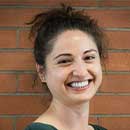
Linda Paternò
The MAPWORMS project: Biomimicry, smart materials and shape-morphing robots
Abstract
The talk describes the unique approach and the first results obtained in the framework of the MAPWORMS project, which aims at starting a novel paradigm of robotics and overcoming the limitations of current state-of-the-art solutions by embedding responsivity in the constitutive materials of the machines. The objective is developing a new concept of bioinspired robots operating in response to environmental stimuli thanks to their shape-morphing configuration. The result is a completely autonomous robot capable of performing many different tasks, rather than a robot controlled by a central unit and able to execute specific tasks only in a pre-defined and structured environment. The shape morphing behaviour is inspired by the marine Annelida, which are able to adapt to all the marine habitats, even the extreme ones, by burrowing into sediments, anchoring to holes and crevices, exploring the surroundings by protruding and elongating body parts, and retracting the body to escape predation.
Short Bio
Linda Paternò received her BSc degree and MSc degree in Biomedical Engineering from the Univesity of Pisa (Italy), respectively in 2013 and 2016. In 2020, she received the Ph.D. in BioRobotics (full marks, cum laude) with a thesis entitled Physical human-machine interfaces for lower limb prostheses. She is currently an assistant professor (RTDa) at the BioRobotics Institute of Scuola Superiore Sant’Anna in the Surgical Robotics and Allied Technologies Area. Her research activity is mainly focused on the exploitation of soft and bio-inspired robotics as a tool for solving many of the requirement issues to be faced in the design of medical devices. During her career, she worked on the development of robotic devices with high compliance, back-drivability, and variable stiffness, to allow for novel functionalities in systems in direct contact with humans, in particular prosthetic sockets and minimally invasive surgery devices.
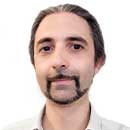
Emiliano Votta
Robotics and AI to revolutionise interventional cardiology
Abstract
ARTERY project aims to speed up the percutaneous treatment of structural heart diseases, introducing a procedure that is easier to learn and to perform, as well as being safer and radiation-free, thereby widening the scope of this technology and exploiting its exciting potential more fully. ARTERY will design, build and benchmark a completely novel variable/shared autonomy robotic platform for preforming life-saving percutaneous structural heart diseases procedures.
Short Bio
Emiliano Votta is an Associate Professor at Politecnico di Milano (Polimi), in the Department of Electronics, Information and Bioengineering.
His main research interest is cardiovascular biomechanics: by hybridizing clinical imaging, numerical modeling and continuum mechanics, he has been developing computational models to quantify cardiovascular fluid-dynamics or the structural mechanics of cardiovascular solid tissues, so to support diagnosis and clinical decision making.
Since 2019, he is one of the co-founders of Artiness, a Polimi spin-off company devoted to developing augmented reality applications to support the planning of interventional cardiology and thoracic surgery procedures.
He currently coordinates the EU-funded project ARTERY, aimed at developing a robotic platform to make transcatheter cardiac interventions easier to perform and safer. His research activity has lead to ~80 ISI journal papers (H-index 26, 2500+ citations, source: Scopus).

Vito Trianni
Swarm robotics: leveraging bio-inspiration for collaborative robots
Abstract
Swarm robotics studies the design and implementation of multi-robot systems with decentralised control capable of tackling complex missions thanks to self-organisation and collaboration. The basic idea of swarm robotics is to use robots capable of relatively simple behaviours, and therefore with low production costs, exploiting the collaboration between robots to perform complex tasks as a group. A clear example of how this is possible comes from biology, and in particular from the observation and study of the behaviour of eusocial animals such as bees or ants. In this seminar, I will show how complex behaviours at the group level (e.g., aggregation, coordinated motion and group decisions) can be obtained thanks to very simple individual rules, derived from the observation of natural systems.
Short Bio
Vito Trianni is a research director at the Institute of Cognitive Sciences and Technologies of the Italian National Research Council (ISTC-CNR). VT received the Ph.D. in Applied Sciences at the Université Libre de Bruxelles (Belgium) in 2006, and the M.Sc. in Computer Science Engineering at the Politecnico di Milano (Italy) in 2000.
VT’s research mainly involves collective intelligence and swarm robotics. VT pioneered the domain of Evolutionary Swarm Robotics, that is, the synthesis of collective behaviours for robotic swarms through artificial evolution. VT is also conducting research on the analysis and design of large-scale decentralised systems, not limited to robot swarms (e.g., cyber-physical and socio-technical systems). Finally, VT is pursuing the development of hybrid collective intelligence, where humans and machines interact to collectively solve complex problems (e.g., decision support to medical diagnostics and policy making).
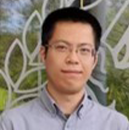
Ziyu Ren
Magnetically-driven Mobile Miniature Robots
Abstract
Mobile miniature robots that can access and operate in unprecedented, dangerous, or hard-to-reach small spaces noninvasively toward medical, biotechnology, desktop manufacturing, environmental monitoring, and other potential applications have thrived within the last decade. The unique advantages of the magnetic actuation method, including its wireless nature, long operation range, fast and precise actuation capability of single or a large number of robots, and good penetrability in biological tissues make it stand out among many other actuation methods achieved by electricity, light, acoustic wave, or biological muscles, and especially suitable for medical applications. In this presentation, I will review the development of magnetically-driven miniature robots in the past decades, explain their working principles, fabrication techniques, and control strategies, discuss the challenges currently in this field, and discuss the progress we should make toward real-world applications.
Short Bio
Ziyu Ren is a postdoc in the Physical Intelligence department at the Max Planck Institute for Intelligent Systems. He received his B.S. and M.S. in mechanical engineering from Beihang University and his Ph.D. in information technology and electrical engineering from ETH Zurich under the supervision of Dr. Metin Sitti. He focuses on developing small-scale soft-bodied robots for biomedical applications and environmental monitoring.
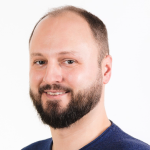
Martin Kaltenbrunner
Materials and methods for sustainable soft system – from biodegradable tough gels to mycelium based electronic skins
Abstract
Modern societies rely on a multitude of electronic and robotic systems, with emerging stretchable and soft devices enabling ever closer human machine interactions. These advances however take their toll on our ecosystem. Mitigating some of these adverse effects, this talk introduces materials and methods for soft systems that biodegrade. Based on highly stretchable biogels and degradable elastomers, our forms of soft electronics and robots are designed for prolonged operation in ambient conditions without fatigue, but fully degrade after use through biological triggers. Going beyond, we introduce a systematically-determined compatible materials systems for the creation of fully biodegradable, high-performance electrohydraulic soft actuators. They reliably operate up to high electric fields, show performance comparable to non-biodegradable counterparts, and survive over 100,000 actuation cycles. Pushing the boundaries of sustainable electronics, we demonstrate a concept for growth and processing of fungal mycelium skins as biodegradable substrate material. Mycelium-based batteries allow to power autonomous sensing devices including a Bluetooth module and humidity and proximity sensors, all integrated onto mycelium circuit boards.
Short Bio
Martin Kaltenbrunner is a full professor at the Johannes Kepler University Linz, heading the Soft Matter Physics Division and the LIT Soft Materials Lab. He received his master’s and PhD degrees in physics from the Johannes Kepler University in 2008 and 2012 working with Siegfried Bauer. He then joined the Someya-Sekitani Lab for Organic Electronics at The University of Tokyo as postdoctoral researcher, leading the “Imperceptible Electronics Team”.He Returned to JKU in 2014. His research group specializes in soft electronics and soft transducers, in particular on sustainable and biodegradable elastic materials and processes for skin-inspired electronics and embodied robotics. They are pioneers in soft and stretchable batteries and solar cells as well as ultrathin and lightweight electronic foils. The group develops materials strategies, design rules and technologies including resilient yet degradable soft and elastic substrates, passive and active components and power sources that enable green wearable (bio)electronics and soft robots.
